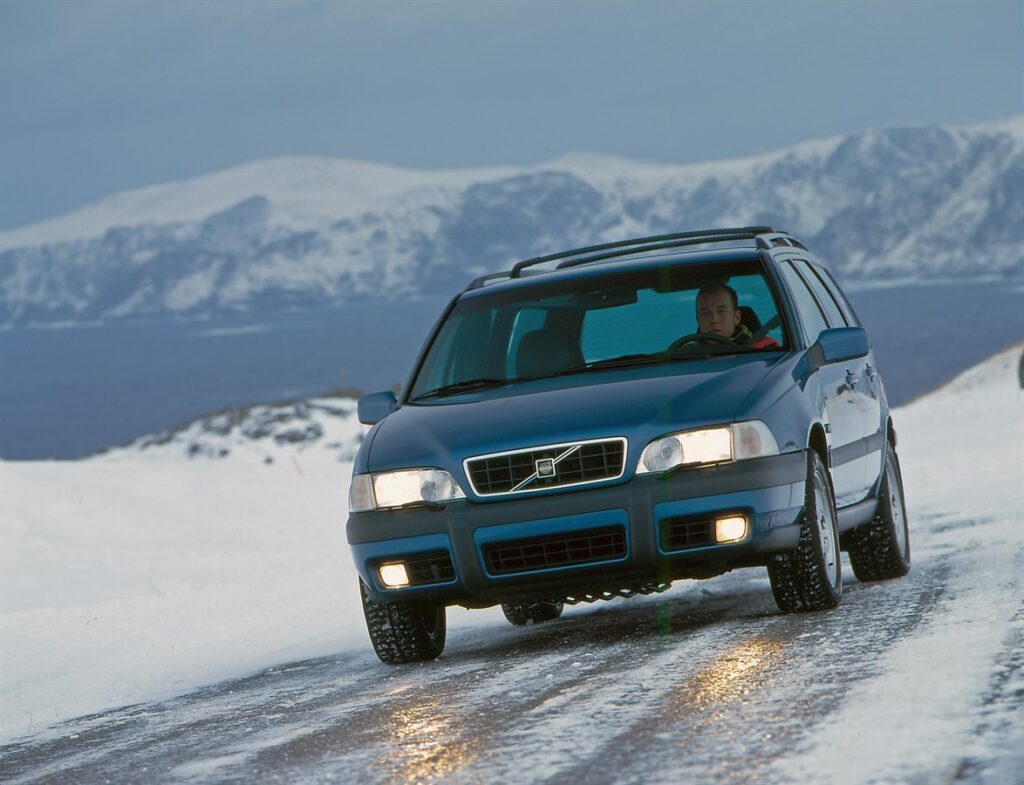Volvo V70 XC / XC70 Cross Country: Model History and Buyer’s Guide

Contents
Introduction
Volvo wasn’t the first automaker to offer a lifted, all-wheel drive wagon. That honor goes to American Motors, whose novel Eagle wagon first hit showrooms in 1979. Unfortunately for AMC, the Eagle was far ahead of its time. Sales were tepid, and it vanished from the market just eight years later.
But times change. When Subaru followed suit with the Outback, which first appeared for the 1995 model year, their timing was impeccable. Americans had just begun their love affair with the SUV, and the Outback offered much of an SUV’s utility in a friendlier-to-drive package. It was a sales hit — and continues to be to this day.
Volvo, long the wagon-maker of choice for college professors and suburban carpoolers, noted this development. They took their excellent V70 model, added 1.4 inches of ride height and all-wheel drive, threw on some rugged-looking trim, and voila! The Volvo “Cross Country” — or “XC” for short — was born.
The Cross Country wagon has been a mainstay in the Volvo lineup ever since. (It’s sold new today in two different formats: the midsize V60 and the full-size V90.) And unlike the Subaru Outback, which is now far more SUV-like, Volvo’s XC wagon has always stayed true to its longroof roots.
With the XC wagon nearing 25 years in production, now is an excellent time to look back through its variation generations, each offering some compelling value propositions for the used car buyer.
First Generation (1998-2000)
- Refresh of Volvo 850 with a 190-hp engine and light off-road capability
- Equipped with basic luxuries like heated seats and climate control
The first-gen Cross Country wasn’t really an all-new model. Instead, it’s a mid-cycle refresh of Volvo’s popular 850 wagon, renamed the “V70” for the 1998 model year. The “V” stood for “versatility,” and the “70” represented its place as the Swedish automaker’s midsize model, slotted between the compact 50-series and the full-size 90-series wagons.
The V70 offers a slightly more rounded appearance than the slab-sided 850, plus a more luxurious interior with modern amenities such as automatic climate control, heated front seats, and front and side airbags. In addition to the increase in ride height, opting for the Cross Country version adds unpainted trim, a unique grille, and beefier roof rails to signal its outdoorsy intentions.
Under the hood, Volvo’s 2.4-liter turbocharged inline five-cylinder engine carries over from the 850. Mounted transversely, the 20-valve DOHC unit produces a healthy 190 horsepower and 199 lb-ft of torque, driving all four wheels through a standard four-speed automatic transmission. The XC’s sophisticated all-wheel-drive hardware delivers most of the power to the front wheels in everyday driving but can send up to 95% rearward in slippery conditions.
Longer springs and taller tires give the XC an additional inch of ground clearance compared to the standard model. That’s not enough to make it a serious off-roader, but it does allow the wagon to travel pitted dirt roads without much fuss. The additional suspension travel also makes for a much more comfortable ride than the regular V70.
Reviewers praised the XC’s combination of utility and performance. In their road test at the time, MotorTrend concluded, “It does a top-notch job of blending much of the all-weather versatility and cargo-carrying potential of an SUV with the excellent handling, braking, and safety of a Volvo passenger car.”
Model Year Changes
1998: The 850 wagon, which first appeared in 1992, is thoroughly updated for 1998 and receives a new model name: “V70.” Volvo introduces the rugged all-wheel drive “Cross Country” (or “XC”) variant.
1999: the V70 XC gets a host of minor improvements, including a new engine management system, upgraded four-channel anti-lock brakes (ABS), new side-impact airbags, and better dual-stage front airbags.
2000: No Significant Changes.
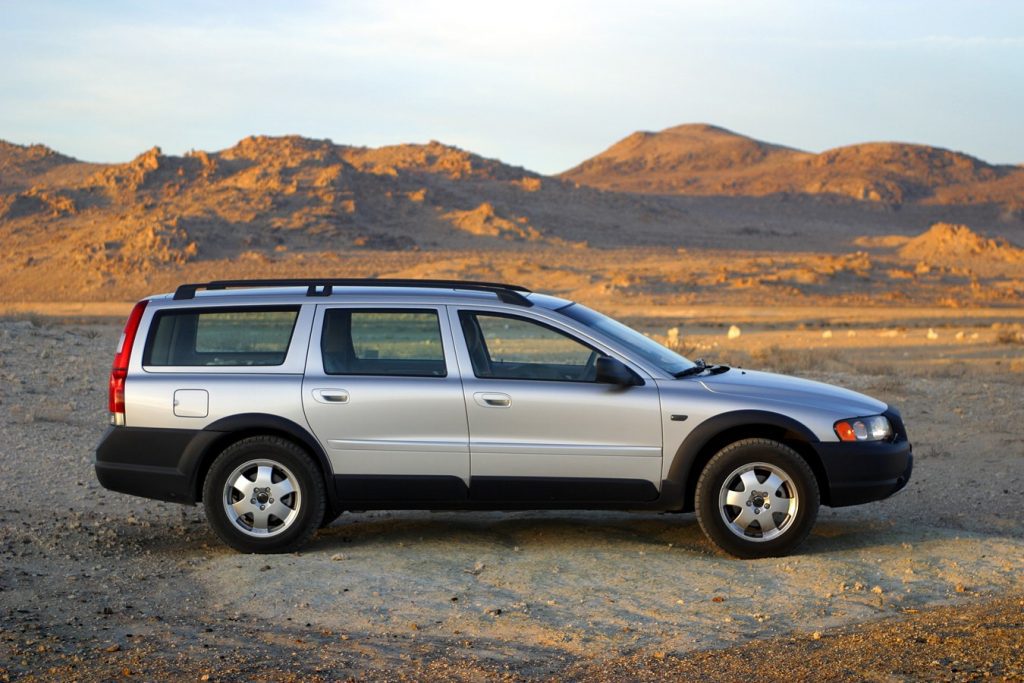
Second Generation (2001-2007)
- Redesign adds more cabin space, more power (197 hp), and a five-speed automatic
- Enhanced luxury and safety features
Volvo completely redesigned the V70 for the 2001 model year. Longtime design chief Peter Horbury tossed out the wagon’s traditional boxy look in favor of a much more streamlined profile, similar to the flagship S80 sedan, which had debuted a few years earlier (and upon which the V70 is based). Horbury characterized the V70’s new shape this way: “Imagine the front end of an E-type Jaguar married to the back end of a Ford Transit van.”
Compared to the outgoing model, the new V70 is about the same length but gains a few inches between the front and rear wheels, providing more space for occupants. As before, the Cross Country (XC) version takes the basic V70 and gives it the outdoorsy treatment. That means adding significantly more body cladding, additional ground clearance (to 8.2 inches), all-wheel drive, and larger wheels and tires. The XC also gets wider front fenders and fender flares to accommodate its additional rubber.
Power still comes from Volvo’s 2.4-liter turbocharged inline-five but gains a few ponies, now producing 197 hp and 210 lb-ft of torque. The Aisin-supplied automatic gearbox also adds a cog, now offering five forward gears. Together, they deliver reasonable motivation, getting the V70 XC to 60 mph in about eight and a half seconds. Meanwhile, the wagon’s new S80 underpinnings (which Volvo calls its “P2” platform) boast McPherson struts up front and a multi-link suspension in back, making it engaging to drive both on the pavement and off.
Inside the cabin, passengers benefit from many available features, including a navigation system, a sunroof, heated seats, and leather upholstery with distinctive baseball-glove stitching. Volvo keeps the safety bar high, fitting front, side, and side-curtain airbags, plus its innovative whiplash-protection system (known as WHIPS), which allows the seats to deform partially in rear-end collisions to reduce the chance of injury.
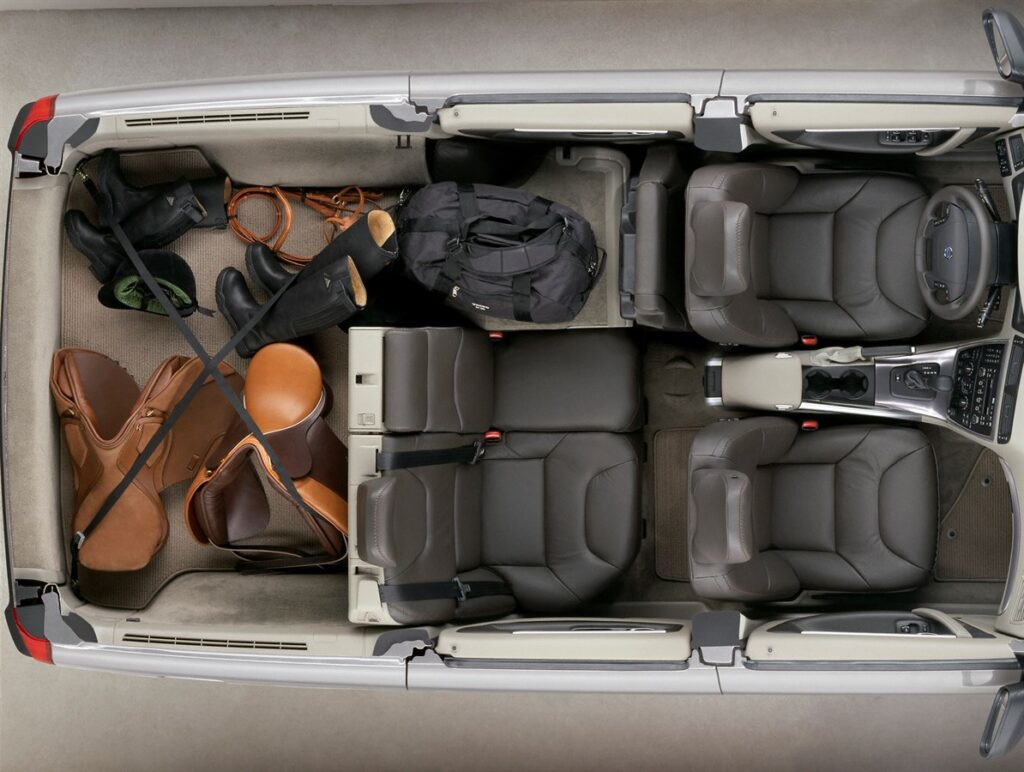
Model Year Changes
2001: The second-gen V70 XC debuts.
2002: Volvo adds emergency brake assistance to the V70 XC to help with accident avoidance. It also makes a rear cargo cover standard equipment.
2003: Volvo simplifies the V70 XC badge to “XC70” matching the naming convention used by its new SUV sibling, the XC90. Power also increases to 208 hp and 236 lb-ft of torque thanks to a small bump in displacement (to 2.5 liters). Finally, its Haldex all-wheel-drive system changes from mechanical to electronic control.
2004: Bi-xenon headlights become available, while power steering is updated to a ZF-supplied rack-and-pinion system.
2005: The XC70 receives a mild refresh. Exterior changes include a flashier front end, revised headlights and taillights, and the use of brushed aluminum in the roof rails. Inside the cabin, the front seats and center console are updated, and Volvo’s new blind spot warning system (aka BLIS) becomes an option.
2006: The XC70’s all-wheel-drive system gains quicker reflexes thanks to an update to its computer control system. It also adds an optional adaptive suspension system, which offers two driving modes (Sport and Comfort).
2007: For the second-gen XC70’s final model year, Volvo revises the wheel design and integrates turn signals into the side mirrors. It also makes electronic stability control and tire pressure monitoring standard features, offers adaptive headlights, rear parking assist, and dual-screen rear-seat entertainment as options, and eliminates the optional rear-facing third row.
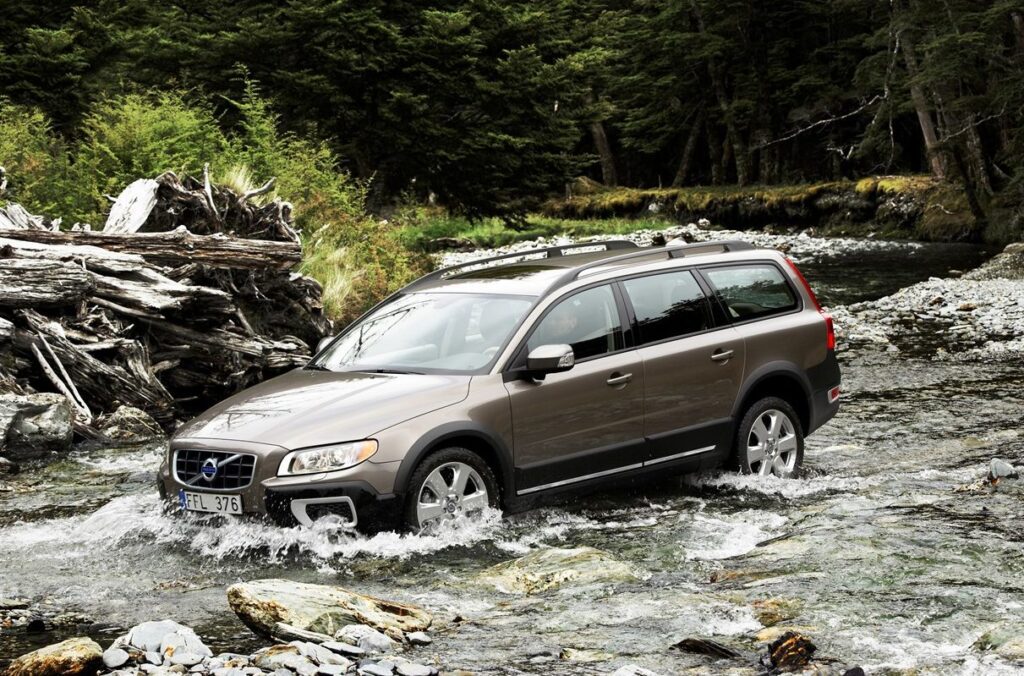
Third Generation (2008-2016)
- New 3.2-liter inline-six with optional 281-hp turbo variant
- Luxe interior upgrades and slight bump in off-road capability
Ten years after the original Cross Country debuted, Volvo launched the third generation XC70 (for the 2008 model year). The all-new design looks very much like the prior XC. But if you squint, you’ll notice that the front end has been refined with a new grille and headlights, the body cladding looks less tacked-on than before, and the rear tailgate sports larger glass, echoing the distinctive styling of Volvo’s C30 hatchback. The new version is also larger in almost every dimension: slightly taller, longer, and heavier than the outgoing car.
Most of the changes lie beneath the surface. Like the prior version, the third-gen XC70 shares mechanicals with its larger stablemate, the S80, which was completely updated for 2007 (using Volvo’s new “P3” platform). The revised XC70 inherits the S80’s 3.2-liter six-cylinder engine, offering one more cylinder and upping horsepower by about ten percent to 235. Torque remains the same at 236 lb-ft, but without the benefit of the outgoing mill’s turbocharger, it comes at higher revs: 3200 rpm vs 1500 rpm. As a result, the new inline-six can feel slightly anemic unless you put your foot in it.
That’s mitigated somewhat by a new six-speed automatic transmission. Its extra gear helps the revised XC70 get to 60 mph in about the same time as its predecessor (8.5 seconds) despite a roughly 400 lb weight gain. Even better, Volvo made a turbocharged version of the engine (dubbed “T6”) available for the 2009 model year. With boost, it churns out a more impressive 281 hp and 295 ft-lbs of twist. That drops 0-60 times into the low seven-second range — not exactly quick, but with max torque with the turbo coming at just 1500 rpm, it feels far more authoritative.
The revised XC70 also gets much of the flagship S80’s interior — a welcome upgrade. That includes wonderfully supportive front seats, the now familiar Volvo “floating” center stack, and richer colors and materials. Some notable new amenities are: height-adjustable integrated child booster seats, a standard 160-watt high-performance audio system (with a spine-shaking 650-watt Dynaudio upgrade also offered), and available adaptive cruise control.
While the same basic Haldex all-wheel drive system carries over, the third-gen XC70’s off-road chops are enhanced by a new hill-descent control mode, plus a slight improvement in both approach and departure angles as well as ground clearance, which rises a tenth of an inch to 8.3 inches. It’s still no rock crawler, though. The most significant gains offered by the XC70’s off-road hardware probably come from its relaxed ride and unflappable demeanor, even in slippery conditions.

Model Year Changes
2008: The all-new third-gen XC70 debuts.
2009: Volvo adds an optional turbocharged inline-six engine (T6), upping horsepower by 46 and torque by 59 lb-ft versus the naturally-aspirated version. T6-equipped versions also get larger 17-inch wheels, dual tailpipes, unique interior trim details, and plenty of “T6” badging. Bluetooth is also now standard on all versions.
2010: The XC70 gets a revised grille, additional chrome accents, and improved navigation graphics and controls. Also, the T6 trim goes upscale, adding leather upholstery, integrated booster seats, wood trim, and 18-inch wheels as standard equipment.
2011: Volvo introduces a front-wheel drive (FWD) version of the XC70. Also, the base engine benefits from a slight power increase, adding five hp for 240 total. Meanwhile, the turbocharged T6 mill (pictured below) gets an even bigger boost, now offering 300 hp and 325 lb-ft of torque, which drops its 0-60 time to just 6.9 seconds. Satellite radio becomes standard on all models, as does a glass moonroof on the T6.
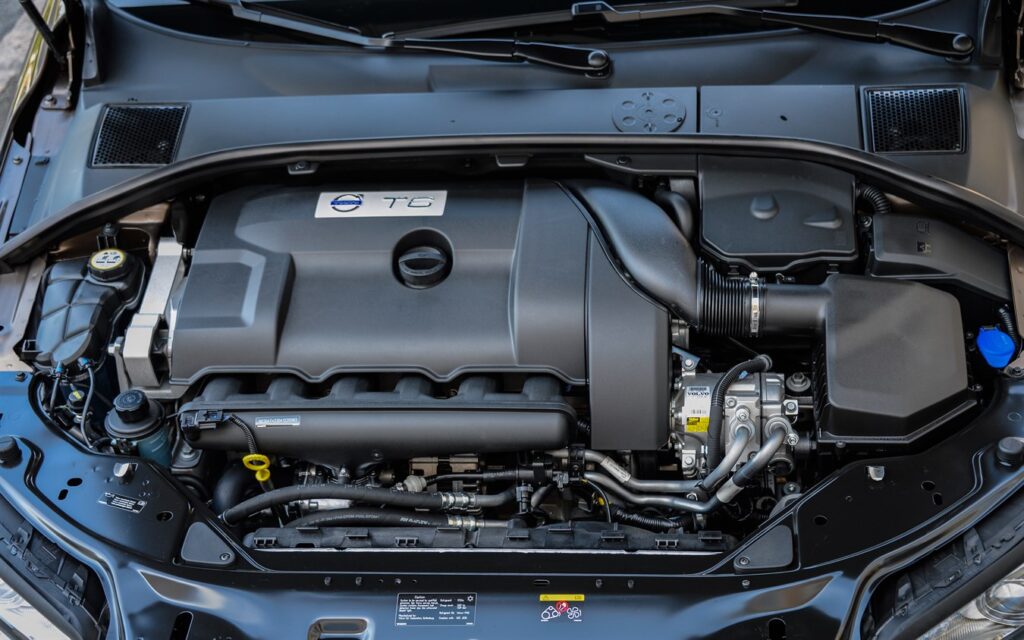
2012: The XC70 adds a seven-inch infotainment screen to the dashboard, displaying controls and information for the audio, navigation, and other systems. Audio streaming via Bluetooth is also now standard for all trims.
2013: Volvo adds rain-sensing windshield wipers and headlight washers to the XC70. The T6 trim also gets standard keyless entry and ignition and a new “Sport” mode for its six-speed automatic transmission, which quickens acceleration to 60 mph by four-tenths of a second.
2014: Volvo refreshes the XC70 with revised bumpers, headlights, taillights, and a new grille. Inside, a heated steering wheel is newly available, and the T6 model receives a configurable digital instrument cluster.
2015: The base front-wheel-drive XC70 drops its inline six in favor of a 2.0-liter turbocharged four-cylinder engine. It offers similar power (240 hp and 258 lb-ft of torque) and is mated to a new eight-speed automatic gearbox with start/stop technology. The all-wheel drive models continue with six-cylinder power and the six-speed automatic. Other changes include improved in-car connectivity (which Volvo calls Sensus Connect), featuring a (subscription-based) WiFi hotspot and access to emergency roadside assistance, voice commands, and some in-car apps.
2016: For the XC70’s final model year, Volvo drops the T6 from the lineup in favor of a more fuel-efficient turbocharged five-cylinder (“T5” in Volvo-speak). That engine produces 250 hp and 266 lb-ft of torque and drives all four wheels via a six-speed automatic. Meanwhile, the base FWD model continues with the turbo four and eight-speed gearbox. The base model also gets 18-inch wheels and heated seats as standard equipment.

What are the Best Years?
- First-gen models are rare but offer classic Volvo styling
- Second-gen models balance improvements and affordability
- Third-gen models are the most modern but come at a higher price
Your primary goal should be to buy the very best example you can find. That means one with a clean and original appearance inside and out, a well-documented history of on-time maintenance, no accidents or rust, and no deferred repairs (e.g. “AC just needs a recharge”). A truly nice example, one that’s been loved by its prior owner(s), will clearly stand out from the others. It may also come with a premium price, but don’t let that scare you. In most cases, paying a bit more for a top-notch specimen makes sense. Unless you’re an expert DIY mechanic, returning a needy car to excellent condition always costs more in the long run than just buying a nice one to begin with.
If you like your Volvos old school, a first-gen V70 XC (1998-2000) is the one for you. Its boxy styling harkens back to the classic 240- and 740-series Volvo bricks of the 1970s and 80s. However, it’s been over twenty years since they were last sold new, so a first-gen XC can be tough to find, especially in good shape. We uncovered just eight listed for sale nationwide on a recent AutoTrader search. But among those was a sweet-looking 2000 V70 XC with a relatively low 135k miles on the odometer (link to listing). Other than some typical creasing of the leather upholstery, it looks like a solid bet at $6900.
With the second-gen V70 XC / XC70 (2001-2007) came with tons of improvements, including more passenger room, more power (especially after 2003 when the engine grew to 2.5 liters), and a more sophisticated all-wheel drive system. Of the three generations, it’s the least attractive to our eyes, especially since its ample plastic cladding tends to fade and discolor with age. But that doesn’t keep it from making an excellent do-anything car on the cheap. It’s also far easier to find for sale than a first-gen XC. We located about 70 second-gen XCs listed nationwide, ranging in price from around $2500 for those with well over 200k miles to a 39k-mile garage queen for nearly $14,000. The sweet spot, though, is in the middle. Clean examples with under 125,000 miles tend to fetch about $7500.

For us, though, the third time is the charm: we like the final iteration of the XC70 (2008-2016) best of all. It’s not only the most modern, powerful, and capable off-road, but it’s also the most abundant on the used car market. The downside? It’s the priciest of the three. We found over 200 for sale nationwide, with asks ranging from around $6000 for examples with 150k miles or more to over thirty grand (!) for later model years with under 50k on the clock. Those lofty prices reflect the fact that the newest of the third-gen XC70s are just five years old and still rapidly depreciating.
If it were our money, we’d take this (link to listing) very clean white-on-black 2011 XC70 with the 300 hp T6 engine, just 102k miles, and a clean vehicle history report showing no accidents plus tons of regular maintenance. It’s offered — by the same dealership where it was serviced for many years — for a reasonable $14,888. That’s a heck of a lot of Volvo wagon for the money.
Finally, before you spend thousands on a used XC, we highly recommend hiring a Volvo specialist to evaluate it. For about $250, they’ll provide you with a thorough inspection of the entire car. This can reveal potentially deal-breaking issues, such as hidden accident damage or excessive engine wear, or minor things that you can use as bargaining points, like worn brake pads or aging tires. Either way, completing a professional inspection before finalizing any used car purchase is easily worth the money.
Photos courtesy of Volvo
